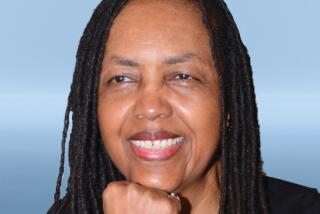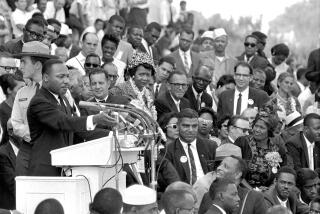The Idea That Brought Slavery to Its Knees
Every Briton knows that the Magna Carta, which placed some of the first limits on the absolute power of kings, was signed in 1215 by a reluctant King John and his barons in a meadow at Runnymede, beside the Thames. Every American knows that the Declaration of Independence was adopted in Philadelphia in 1776, in the building later known as Independence Hall. But another such milestone, equally worth celebrating, too few people remember.
The document involved is merely the minutes of a meeting. And if you go today to the spot where the meeting took place, 2 George Yard, a small courtyard in London’s financial district, you will find no monument, no plaque, no troops of schoolchildren -- only the service entrance to an office building.
Yet the reverberations from what happened on this spot, on the late afternoon of May 22, 1787, eventually caught the attention of millions of people around the world, including the first and greatest student of what today we call civil society. The result of the series of events begun that afternoon in London, wrote Alexis de Tocqueville decades later, was “absolutely without precedent.... If you pore over the histories of all peoples, I doubt that you will find anything more extraordinary.” The building that once stood at 2 George Yard was a bookstore and printing shop. The proprietor was James Phillips, publisher and printer for Britain’s small community of Quakers. On that May afternoon, after the pressmen and typesetters had gone home for the day, 12 men filed through his doors. They formed themselves into a committee with what seemed to their fellow Londoners a hopelessly idealistic and impractical aim: ending first the slave trade and then slavery itself in the most powerful empire on Earth.
The interests they were taking on were entrenched and influential. Britain dominated the Atlantic slave trade. Roughly half the slaves taken across the ocean to its lucrative West Indian sugar islands, to the United States and to other European colonies were transported in British ships. Starting an anti-slavery movement in Britain in 1787 was like starting a renewable energy movement in Saudi Arabia today.
The minutes of that historic meeting, preserved in a leather-bound volume at the British Library, are only a single page long, in the clear, flowing handwriting of the committee’s firebrand organizer, Thomas Clarkson.
They begin simply: “At a Meeting held for the Purpose of taking the Slave Trade into consideration, it was resolved that the said Trade was both impolitick and unjust.” Throughout history, of course, slaves and other oppressed people have periodically staged uprisings. Given the conditions under which they lived, that was only to be expected. But what made the movement that grew out of the George Yard meeting so unprecedented was this: It was the first time that a large number of people in one country became outraged -- and stayed outraged for many years -- over the plight of other people, of another color, in other parts of the world.
The movement took off immediately, in a way that earlier scattered abolitionist efforts, in both Britain and North America, never had. Petitions flooded Parliament, which the following year took the timid first step of regulating conditions on the slave ships. Slavery became the prime topic of the London debating societies. Anti-slavery books and posters flooded the country. In a seven-year period, Clarkson rode 35,000 miles by horseback through England, Scotland and Wales, setting up local anti-slavery committees.
No one was more astonished than the powerful slave owners’ lobby, which previously had only concerned itself with sugar tariffs and the like. “The Press teems with pamphlets upon this subject, and my table is covered with them,” Stephen Fuller, London agent for the Jamaican planters, reported in despair to his employers. “The stream of popularity runs against us.”
The outpouring, moreover, defied economic self-interest. From Sheffield, famous for making knives, scissors, razors and the like, 769 metalworkers petitioned Parliament against the slave trade, saying that even though their wares had routinely been purchased by slave-ship captains and then traded to buy slaves in Africa, they nonetheless “consider the case of the nations of Africa as their own.” Fuller was amazed that the petitions pouring into Parliament were “stating no grievance or injury of any kind or sort, affecting the Petitioners themselves.”
It took the movement more than 50 years from that first meeting to end slavery in the British empire. That goal was finally reached in 1838, a full quarter of a century before slavery died in the United States. No more chained slaves cross the Atlantic today, but the spirit that crystallized at George Yard is with us in a different way. In the idea that those who suffer “no grievance or injury” have the obligation to speak up for those who have suffered them lies the birth of the vision that human rights are universal.
In this very unequal world of ours, where decisions made in our own country -- on subjects including military intervention, the sanctioning of torture and the complex economics of globalization -- connect us morally to the farthest corners of the Earth, this is an idea that seems more relevant than ever. In that sense, the process born on that long-ago afternoon in 1787 is not only incomplete, it has barely begun.
More to Read
Sign up for Essential California
The most important California stories and recommendations in your inbox every morning.
You may occasionally receive promotional content from the Los Angeles Times.










